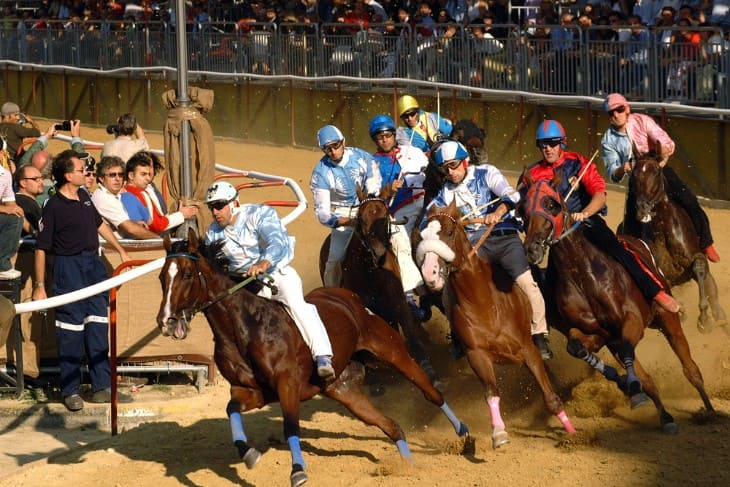- Understanding the Basics of Allowance Racing
- The Criteria for Allowance Races: Eligibility and Conditions
- Comparing Allowance Races with Other Types of Horse Races
- The Role of Weight Allowances in Race Outcomes
- Training Strategies for Horses in Allowance Races
- Key Allowance Races: A Global Perspective
- The Human Element in Allowance Racing
- The Economic Impact of Allowance Racing on the Horse Racing Industry
- Understanding Betting Strategies in Allowance Races
- Conclusion
Understanding the Basics of Allowance Racing
Allowance racing represents a significant tier in the hierarchy of horse racing, positioned between claiming races and stakes races. These events are pivotal for horses that have surpassed the basic level of maiden races but are not yet ready for the high stakes competitions. The defining characteristic of allowance races is the set of specific conditions that determine which horses are eligible to compete. These conditions often include factors such as the horse's age, gender, and previous race record. Unlike claiming races, horses in allowance races are not up for sale, which reflects their increased value and potential.
Furthermore, the structure of allowance races varies significantly across different racetracks and jurisdictions. This variation extends to the distance of the race, the surface on which it is run, and the prize money offered. Generally, these races serve as a proving ground for horses, offering a competitive but accessible level of racing. It is in these events that potential stars begin to show their prowess, often leading to careers in more prestigious races.
The Criteria for Allowance Races: Eligibility and Conditions
Eligibility and conditions for participation in allowance races are crucial for maintaining the integrity and competitive balance of these events. The criteria are meticulously defined and include several key factors:
- Horse's Age: Most allowance races have age restrictions, typically limiting participation to horses that are two or three years old. This age-specific approach helps in ensuring fair competition among similarly experienced horses.
- Previous Performance: A horse's past performances play a significant role in eligibility. Horses that have won certain types of races, such as maiden races, are often eligible for allowance races.
- Weight Allowances: Horses may receive weight allowances based on various factors like age, gender, or past performance. These allowances are crucial in leveling the playing field, offering slight advantages to horses based on specific criteria.
These eligibility criteria are not just mere formalities; they significantly impact the strategy and selection process for trainers and owners. Trainers must carefully assess their horses to determine the most appropriate races for them, considering factors such as the horse's development, recent performances, and suitability to the race's conditions. Owners and trainers must navigate these criteria skillfully to maximise their horses' chances of success and progression in the competitive world of horse racing.
Comparing Allowance Races with Other Types of Horse Races
Allowance races hold a unique position in the spectrum of horse racing, and understanding their place involves comparing them with other race types:
- Maiden Races: These are for horses that have never won a race. Allowance races are a step up, for horses that have won or shown promise but are not yet ready for the top tier.
- Claiming Races: In these races, horses are up for sale for a predetermined price. Allowance races, in contrast, do not involve selling horses, indicating a higher level of competition and quality.
- Stakes Races: These are top-tier races, often with significant prize money and prestige. Horses in allowance races may aspire to reach this level, but stakes races are for proven, high-quality horses.
Comparing these types brings clarity to the hierarchical structure of horse racing. Allowance races act as a bridge between the entry-level maiden races and the high-stakes world of championship racing. This positioning helps horses to develop gradually, facing incrementally tougher competition as they progress through their careers. Understanding these differences is crucial for anyone involved in the sport, from trainers and owners to bettors and fans. Each type of race plays a specific role in the development and career of a racehorse, making the sport both challenging and exciting.

The Role of Weight Allowances in Race Outcomes
Weight allowances in horse racing are critical factors that can significantly influence the outcome of a race, particularly in allowance races. These allowances are adjustments made to the weight a horse must carry during a race, typically based on factors like age, gender, and past performance. Younger horses, for instance, may be given a weight advantage over older horses, as they are generally less developed and experienced. Similarly, fillies and mares may receive weight concessions when racing against colts and geldings, to account for natural differences in strength and stamina.
The strategic importance of weight allowances cannot be overstated. Trainers and owners must consider these when selecting races for their horses, as even a small weight difference can impact a horse's speed and endurance. The skill lies in balancing the horse's natural ability with the weight it is required to carry, to maximise performance. Consequently, understanding and utilising weight allowances effectively can be a decisive factor in a horse's racing success, especially in allowance races where the competition is often closely matched.
Training Strategies for Horses in Allowance Races
Training horses for allowance races requires a nuanced approach, tailored to each horse's individual needs and capabilities. The transition from maiden races to allowance races often necessitates a step up in both the intensity and sophistication of training regimes. Trainers must focus on building a horse's physical strength and stamina, as well as honing its racing skills, such as gate speed and race positioning. This period is crucial in a horse's development, as it prepares them for the more demanding challenges of higher-level races.
Mental preparation is equally important. Horses need to be acclimatised to the varying conditions they will encounter in allowance races, including different track surfaces, distances, and levels of competition. Trainers use a variety of techniques, from track work to simulated race conditions, to prepare their horses both physically and mentally. The goal is to develop a well-rounded racehorse, capable of adapting to and excelling in the diverse challenges presented by allowance races. Successful training at this stage can set the foundation for a horse's future successes in more prestigious racing events.
Key Allowance Races: A Global Perspective
Around the world, several key allowance races stand out for their prestige, competitive field, and contribution to the horse racing industry. Highlighting a few notable ones:
- United States: The U.S. racing calendar features numerous significant allowance races that serve as stepping stones for horses aiming for higher-tier competitions. Tracks like Churchill Downs and Belmont Park regularly host these events, drawing competitive fields and offering substantial purses.
- United Kingdom: In the UK, allowance races, often referred to as conditions races, play a pivotal role in the racing season. These races, held at renowned courses like Ascot and Newmarket, are known for their strict eligibility criteria and competitive nature.
- Australia: Australian horse racing includes a series of allowance races that are key fixtures in the racing calendar. Events at Flemington and Randwick, for example, are crucial for horses progressing through the ranks in the Australian racing scene.
These races not only provide a platform for horses to build their racing careers but also contribute significantly to the global horse racing culture. They offer opportunities for emerging talent to shine and establish themselves in the sport, making them essential events for trainers, owners, and racing enthusiasts alike.
The Human Element in Allowance Racing
Jockeys and trainers are integral to the success of horses in allowance races. A jockey's skill in guiding and controlling a horse during a race is a critical determinant of its performance. Experienced jockeys understand the nuances of race strategy, such as when to hold back or push a horse, and how to navigate the field effectively. Their ability to read a race and react accordingly can make the difference between winning and losing, especially in the closely contested environment of allowance races.
Trainers, on the other hand, are responsible for preparing the horse for competition. This preparation involves not only physical training but also mental conditioning, diet management, and overall health care. A trainer's expertise in developing a tailored training program for each horse is vital. It ensures that the horse is at its peak condition on race day. Moreover, trainers must have a deep understanding of the eligibility criteria and conditions of allowance races to select the most suitable events for their horses.
The synergy between jockey, trainer, and horse is essential for success in allowance races. It requires a combination of skill, experience, and understanding of each horse's unique characteristics. The human element, therefore, plays a pivotal role in the fascinating and complex world of horse racing.

The Economic Impact of Allowance Racing on the Horse Racing Industry
Allowance racing holds significant economic value within the horse racing industry. These races, bridging the gap between maiden and stakes races, are not only pivotal for horse development but also generate considerable financial activity. The purses in allowance races, though typically lower than those in stakes races, are substantial enough to attract quality horses and contribute to the livelihoods of those involved in the industry, from owners and trainers to jockeys and stable staff.
Moreover, allowance races contribute to the betting economy. Bettors often find these races appealing due to the competitive nature and the potential for emerging talent, offering opportunities for informed betting decisions. The revenue generated from wagering on these races is a crucial component of the sport's financial ecosystem, supporting racetracks and contributing to the overall health of the horse racing industry.
Understanding Betting Strategies in Allowance Races
Betting on allowance races requires a nuanced approach, considering various factors that can influence the outcome of these races. Some key aspects to consider include:
- Horse's Past Performance: A horse's previous race results, especially in similar conditions, can provide valuable insights into its potential performance.
- Jockey and Trainer Records: The track records of the jockey and trainer can indicate their effectiveness and experience, which can impact a horse's chances in a race.
- Weight Allowances: Understanding the impact of weight allowances on each horse's performance is crucial, as these can significantly affect race outcomes.
Successful betting in allowance races often involves a blend of statistical analysis and understanding of horse racing dynamics. Bettors who can interpret these elements effectively may find themselves with an edge in these competitive events. However, it's important to remember that horse racing, by its nature, involves a degree of unpredictability, making betting a challenging yet exciting aspect of the sport.
Conclusion
In conclusion, allowance races hold a crucial position in the world of horse racing. They provide a vital stepping stone for horses moving up from maiden races and prepare them for the challenges of higher-level competition. These races are not only important for the development of horses but also contribute significantly to the economic and cultural fabric of the horse racing industry.
For more information:








